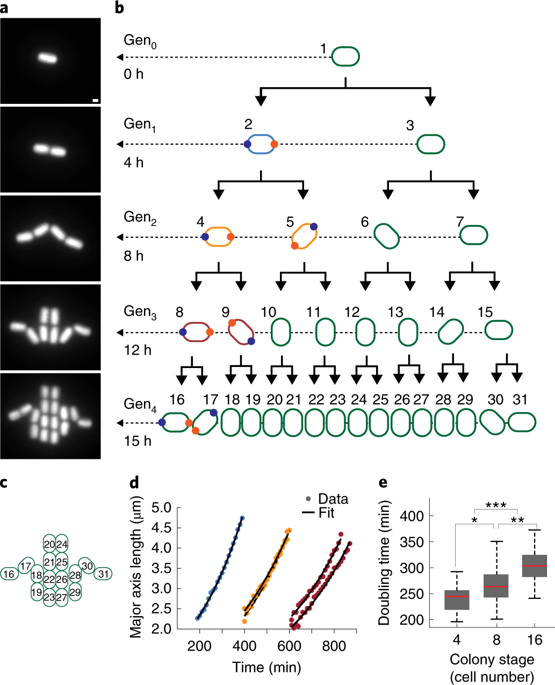当前位置:
X-MOL 学术
›
Nat. Microbiol.
›
论文详情
Our official English website, www.x-mol.net, welcomes your
feedback! (Note: you will need to create a separate account there.)
Mechanical regulation of photosynthesis in cyanobacteria.
Nature Microbiology ( IF 20.5 ) Pub Date : 2020-03-23 , DOI: 10.1038/s41564-020-0684-2 Kristin A Moore 1 , Sabina Altus 2 , Jian W Tay 1, 3 , Janet B Meehl 1, 3, 4 , Evan B Johnson 1, 4 , David M Bortz 2 , Jeffrey C Cameron 1, 4, 5
Nature Microbiology ( IF 20.5 ) Pub Date : 2020-03-23 , DOI: 10.1038/s41564-020-0684-2 Kristin A Moore 1 , Sabina Altus 2 , Jian W Tay 1, 3 , Janet B Meehl 1, 3, 4 , Evan B Johnson 1, 4 , David M Bortz 2 , Jeffrey C Cameron 1, 4, 5
Affiliation

|
Photosynthetic organisms regulate their responses to many diverse stimuli in an effort to balance light harvesting with utilizable light energy for carbon fixation and growth (source-sink regulation). This balance is critical to prevent the formation of reactive oxygen species that can lead to cell death. However, investigating the molecular mechanisms that underlie the regulation of photosynthesis in cyanobacteria using ensemble-based measurements remains a challenge due to population heterogeneity. Here, to address this problem, we used long-term quantitative time-lapse fluorescence microscopy, transmission electron microscopy, mathematical modelling and genetic manipulation to visualize and analyse the growth and subcellular dynamics of individual wild-type and mutant cyanobacterial cells over multiple generations. We reveal that mechanical confinement of actively growing Synechococcus sp. PCC 7002 cells leads to the physical disassociation of phycobilisomes and energetic decoupling from the photosynthetic reaction centres. We suggest that the mechanical regulation of photosynthesis is a critical failsafe that prevents cell expansion when light and nutrients are plentiful, but when space is limiting. These results imply that cyanobacteria must convert a fraction of the available light energy into mechanical energy to overcome frictional forces in the environment, providing insight into the regulation of photosynthesis and how microorganisms navigate their physical environment.
中文翻译:

蓝细菌中光合作用的机械调节。
光合生物调节其对多种多样刺激的反应,以平衡采光与可利用的光能进行碳固定和生长(源汇调节)。这种平衡对于防止可导致细胞死亡的活性氧物种的形成至关重要。然而,由于总体异质性,使用基于整体的测量方法研究蓝藻光合作用调控的分子机制仍然是一个挑战。在这里,为了解决这个问题,我们使用了长期定量延时荧光显微镜,透射电子显微镜,数学建模和遗传操作来可视化和分析多代个体野生型和突变型蓝细菌细胞的生长和亚细胞动力学。我们揭示积极发展的Syechococcus sp的机械限制。PCC 7002细胞导致藻胆体的物理解离和光合作用中心的能量解耦。我们建议光合作用的机械调节是至关重要的故障保险,当光线和营养丰富但空间有限时,防止细胞膨胀。这些结果表明,蓝细菌必须将一部分可用的光能转换为机械能,以克服环境中的摩擦力,从而洞悉光合作用的调控以及微生物如何在其物理环境中导航。我们建议光合作用的机械调节是至关重要的故障保险,当光线和营养丰富但空间有限时,防止细胞膨胀。这些结果表明,蓝细菌必须将一部分可用的光能转换为机械能,以克服环境中的摩擦力,从而洞悉光合作用的调控以及微生物如何在其物理环境中导航。我们建议光合作用的机械调节是至关重要的故障保险,当光线和营养丰富但空间有限时,防止细胞膨胀。这些结果表明,蓝细菌必须将一部分可用的光能转换为机械能,以克服环境中的摩擦力,从而洞悉光合作用的调控以及微生物如何在其物理环境中导航。
更新日期:2020-03-23
中文翻译:

蓝细菌中光合作用的机械调节。
光合生物调节其对多种多样刺激的反应,以平衡采光与可利用的光能进行碳固定和生长(源汇调节)。这种平衡对于防止可导致细胞死亡的活性氧物种的形成至关重要。然而,由于总体异质性,使用基于整体的测量方法研究蓝藻光合作用调控的分子机制仍然是一个挑战。在这里,为了解决这个问题,我们使用了长期定量延时荧光显微镜,透射电子显微镜,数学建模和遗传操作来可视化和分析多代个体野生型和突变型蓝细菌细胞的生长和亚细胞动力学。我们揭示积极发展的Syechococcus sp的机械限制。PCC 7002细胞导致藻胆体的物理解离和光合作用中心的能量解耦。我们建议光合作用的机械调节是至关重要的故障保险,当光线和营养丰富但空间有限时,防止细胞膨胀。这些结果表明,蓝细菌必须将一部分可用的光能转换为机械能,以克服环境中的摩擦力,从而洞悉光合作用的调控以及微生物如何在其物理环境中导航。我们建议光合作用的机械调节是至关重要的故障保险,当光线和营养丰富但空间有限时,防止细胞膨胀。这些结果表明,蓝细菌必须将一部分可用的光能转换为机械能,以克服环境中的摩擦力,从而洞悉光合作用的调控以及微生物如何在其物理环境中导航。我们建议光合作用的机械调节是至关重要的故障保险,当光线和营养丰富但空间有限时,防止细胞膨胀。这些结果表明,蓝细菌必须将一部分可用的光能转换为机械能,以克服环境中的摩擦力,从而洞悉光合作用的调控以及微生物如何在其物理环境中导航。











































 京公网安备 11010802027423号
京公网安备 11010802027423号